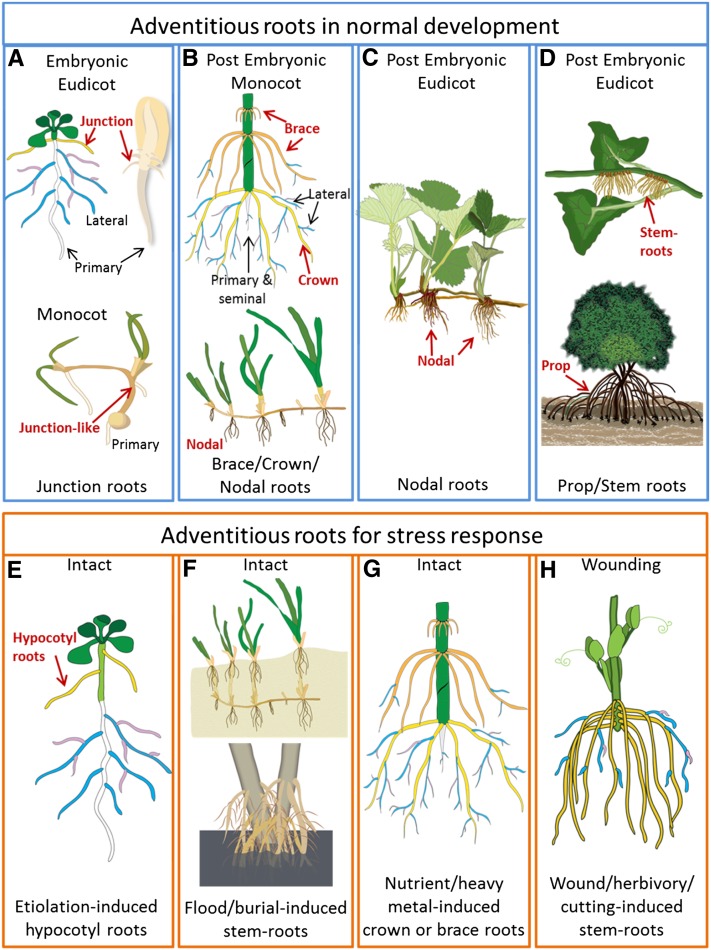Figure 1.
Examples of adventitious root types. This figure highlights a few examples of the diversity of adventitious roots. A to D show types of adventitious roots that form during normal development, including those potentially established in the embryo (A); the dominant root system of monocots, including maize (top image) crown roots (yellow) and brace roots (orange) and nodal roots on other grasses (bottom image; B) and on eudicots such as strawberry (C); and nonnodal roots that provide support for plants such as ivy (top image) and mangroves (bottom image; D). E to H show adventitious root development under stressed conditions: Arabidopsis under low or no light (used as a model for adventitious root regulation; E); burial (top image) or flooding (bottom image) can induce adventitious roots from either nodal or nonnodal stem positions (F); nutrient or heavy metal stress increases adventitious root development (G); and wounding such as cutting induces de novo adventitious root development (H). Primary and seminal roots are depicted in white, first order lateral roots in blue, and second order lateral roots in pink.

